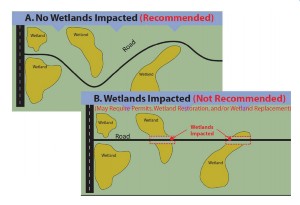Forest Management Guidelines
The development of comprehensive forest management guidelines is a core mandate of the Sustainable Forest Resources Act. Development and implementation of the guidelines has served as a foundation of the work performed by the MFRC. The guidelines are intended to reduce the potential for negative environmental impacts resulting from timber harvesting and other forest-management activities on all forest lands in the State. The guidelines are used primarily by forest managers, loggers, and forest landowners during forestry activities such as timber harvesting.
Minnesota’s timber harvesting and forest management guidelines address the management, use, and protection of historic and cultural resources, riparian areas, soil productivity, water quality and wetlands, wildlife habitat, and visual quality. These guidelines are:
- Comprehensive—Address a wide variety of forest resource issues.
- Science-based—Grounded in the best available scientific information.
- Voluntary—All landowners apply the guidelines according to their management objectives.
- Integrated—Guidelines protecting various forest functions and values are contained in one cohesive package.
- Flexible—Accommodate a range of site-level conditions and management objectives.
- Stakeholder based—Involve the full spectrum of interests in guidelines development, education, and monitoring.
Sustaining Minnesota Forest Resources: Voluntary Site-Level Forest Management Guidelines (2025)
Minnesota's Forest Management Guidelines: Quick Reference Field Guide
Forest Management Guideline Review
The Site Level Forest Management Guidelines (FMGs) were revised by the MFRC starting in 2020. The Site Level Committee undertook a three-part approach to determine whether revision of the FMGs was warranted. The SLC revision review process utilized: 1) a FMG stakeholder survey, 2) a FMG Guideline Monitoring Program review, and 3) a FMG scientific literature review. The main findings of the stakeholder survey and Guideline Monitoring Program are summarized below.
FMG Stakeholder Survey Overview
FMG Monitoring Program Recommendations
FMG 2022 Bibliography: Results of Call for Research Citations
FMG 2022 Executive Summary





